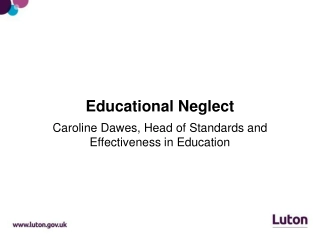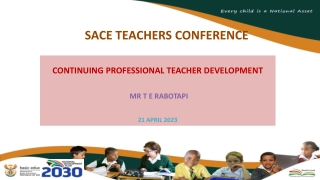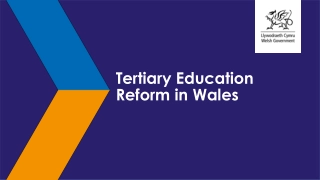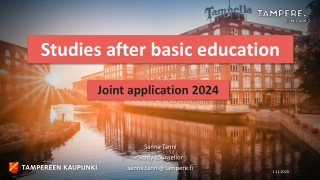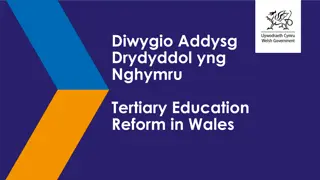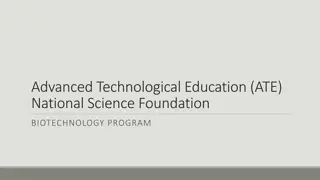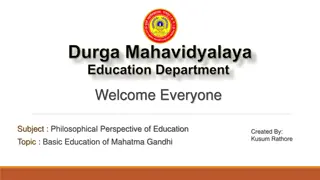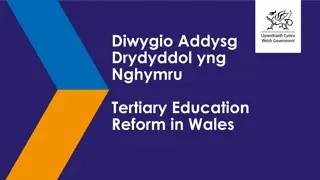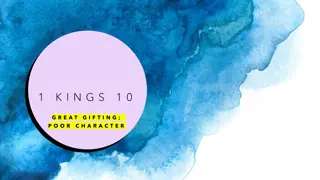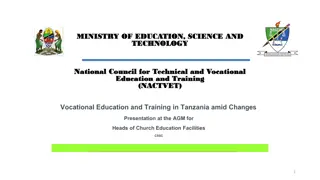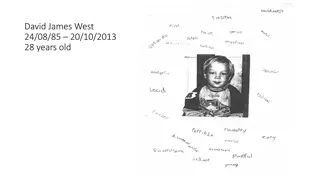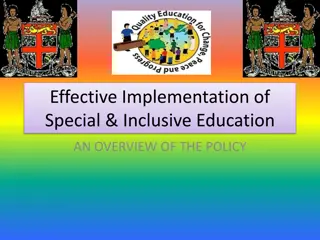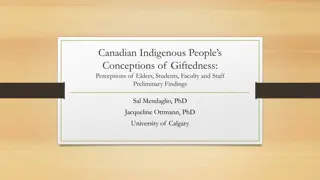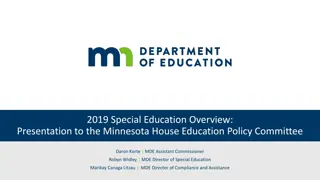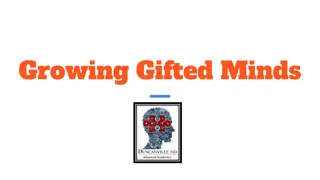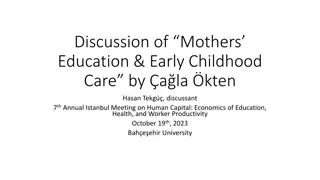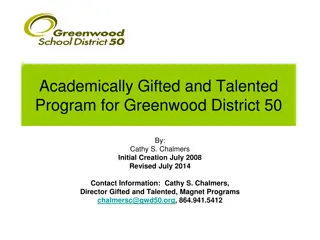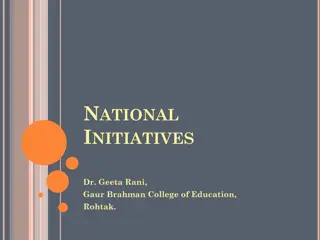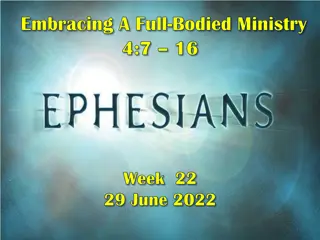Giftedness in Education
Giftedness in education encompasses a wide range of abilities and talents, as defined by the Cattell-Horn-Carroll model of intelligence. Explore the characteristics of gifted and talented students, including their intellectual, creative, and artistic capabilities. Learn about the unique challenges and opportunities in serving gifted learners, with a focus on the state of Texas' approach to gifted education.
Download Presentation

Please find below an Image/Link to download the presentation.
The content on the website is provided AS IS for your information and personal use only. It may not be sold, licensed, or shared on other websites without obtaining consent from the author.If you encounter any issues during the download, it is possible that the publisher has removed the file from their server.
You are allowed to download the files provided on this website for personal or commercial use, subject to the condition that they are used lawfully. All files are the property of their respective owners.
The content on the website is provided AS IS for your information and personal use only. It may not be sold, licensed, or shared on other websites without obtaining consent from the author.
E N D
Presentation Transcript
Gifted 101 A Region 10 ESC GT Parent Portal
Agenda Explore what we mean by intelligence in order to understand [our district s] service design. Understand asynchronous development as it affects our gifted learners Explore the whole-child approach to gifted by looking at individual differences Form connections in order to support [our district s] service design.
What is Gifted & Talented? What do we mean by gifted ? What do we mean by talented ? How are the two words different? How are the two words the same? Why does the State of Texas use both words?
Intelligence The Cattell-Horn-Carroll (CHC) Model of Intelligence includes over 70 types of narrow intelligence includes everything from free-recall memory (M6) to finger dexterity (P2) and olfactory memory (OM). A naturally high ability in any of these areas would be considered a gift. Many individuals show heightened ability in some areas. Child musical prodigy, Jonathan Jazz Russell, who performed improvisational jazz violin with Wynton Marsalis at the age of 14, has a gift for music and for working memory. Working Memory = 99.9th % Visual-Spatial = 3rd % Total IQ = 52nd % (108)
Giftedness in Texas A gifted/talented student is a child or youth who performs at or shows the potential for performing at a remarkably high level of accomplishment when compared to others of the same age, experience, or environment and who exhibits high performance capability in an intellectual, creative, or artistic area; possesses an unusual capacity for leadership; or excels in a specific academic field From the Texas Education Code 29.121
Duncanville ISDs Gifted & Gifted Services State Definition ...performs at ...shows the potential Intellectual Creative Artistic Leadership Specific Academic Field Our core teachers are trained in how to differentiate for gifted and talented students Our Service Design Our GT committee reviews grades Our GT committee reviews certain IQ domains Our GT curriculum includes depth & complexity Our GT curriculum includes independent projects Our design includes options for advanced art (secondary) Our design includes options for professional study
What do we know? Rich learning opportunities provide children a chance to display their gifts and talents. There is not one single profile of giftedness, but there are many cross-cultural traits, aptitudes, and behaviors as well as specific cultural behaviors. Frasier & Passow (1994) as cited in The National Research Center on the Gifted and Talented (1990-2013)
One size does NOT fit all: Cross-cultural Cognitive Traits (thinking & learning) Keen power of abstraction Interest in problem-solving and applying concepts Voracious and early reader Large vocabulary Intellectual curiosity Power of critical thinking, skepticism, self-criticism Persistent, goal-directed behavior Independence in work and study Diversity of interests and abilities
One size does NOT fit all: Cross-cultural Creative Traits Creativeness and inventiveness Keen sense of humor Ability for fantasy Openness to stimuli, wide interests Intuitiveness Flexibility Independence in attitude and social behavior Self-acceptance and unconcern for social norms Radicalism Aesthetic and moral commitment to self-selected work
One size does NOT fit all: Cross-cultural Affective Traits (feelings & emotions) Unusual emotional depth and intensity Sensitivity or empathy to the feelings of others High expectations of self and others, often leading to feelings of frustration Heightened self-awareness, accompanied by feelings of being different Easily wounded, need for emotional support Need for consistency between abstract values and personal actions Advanced levels of moral judgment Idealism and sense of justice
One size does NOT fit all: Cross-cultural Behavioral Traits Spontaneity Boundless enthusiasm Intensely focused on passions Highly energetic needs little sleep or down time Constantly questions Insatiable curiosity Impulsive, eager and spirited Perseverance strong determination in areas of importance High levels of frustration Volatile temper, especially related to perceptions of failure Non-stop talking/chattering
In Summary: You are not alone... Reflect: What traits do you notice with your own child? Connect: What commonalities can we find? Share: Why is it important for teachers to recognize various gifted characteristics?
Duncanville ISDs Gifted & Talented Program Service Design 30 hour requirement. *All identified GT students, K-12, will be instructed by teachers who have been certified through Texas Education Agency s K-6 GT Students 45 minutes, weekly pull out program with a gifted specialist Grade 7-12 GT Students Pre-AP/AP Courses
Resources A visual tour and summary of the Cattell-Horn-Carroll (CHC) Model of Intelligence: http://www.iapsych.com/chcv2.pdf A collection of research studies and links from over twenty years of federally- funded gifted research. The National Research Center on the Gifted and Talented (1990-2013) List of gifted characteristics from the National Association of Gifted Children summarizing the work of Barbara Clark.
Sources Clark, B. (2008). Growing up gifted (7thed.) Upper Saddle River, NJ: Pearson Prentice Hall. as summarized in the National Association of Gifted Children. The National Research Center on the Gifted and Talented (1990-2013) Rethinking Multipotentiality Among the Intellectually Gifted: A Critical Review and Recommendations John A. Achter, Camilla Persson Benbow, David Lubinski


